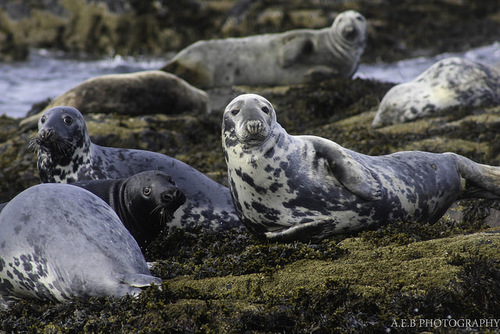
Gray Seal
The grey seal, Halichoerus grypus, thrives along North Atlantic coasts. With spotted grey fur and a distinctive long snout, these curious creatures are social and playful, often seen lounging on rocky shores. They play a crucial role in their ecosystem by maintaining fish populations.
18-25 years
Lifespan
150.0 - 300.0 kg
Weight
Grey, Tan
Color
6 mph
Top Speed
Least Concern
Conservation Status
Increasing
Population Trend
Characteristics
Halichoerus grypus, commonly known as the grey seal, is native to the North Atlantic. It is characterized by its robust body, long snout, and spotted grey fur. Grey seals are known for their playful and inquisitive nature and often found basking on rocky shores or engaging in social behaviors in the water.
Distribution Range of the Gray Seal
The grey seal (Halichoerus grypus) is native to the North Atlantic Ocean. Its geographical distribution includes both the eastern and western sides of the Atlantic. In the eastern Atlantic, grey seals are found along the coasts of the United Kingdom, Ireland, Norway, and the Baltic Sea. In the western Atlantic, they are primarily located along the coastlines of Canada and the northeastern United States, particularly in areas like Nova Scotia, Newfoundland, and the Gulf of Maine.
Gray Seal's Habitat
Environmental Conditions
Grey seals inhabit coastal environments, including rocky shores, sandy beaches, and islands. They are often found in areas with temperate to subarctic climates. The species prefers regions with access to both land for breeding and open water for foraging. The environmental conditions typically range from cold to moderately cold waters, which are rich in marine life.
Ecological Niche
Grey seals occupy an ecological niche as apex predators in their marine environment. They primarily feed on a variety of fish and invertebrates, including sand eels, cod, and herring. They play a crucial role in their ecosystem by helping to regulate fish populations. Their adaptability to both rocky and sandy habitats allows them to thrive in diverse coastal ecosystems.
Copyright @ Nature Style Limited. All Rights Reserved.
 English
English